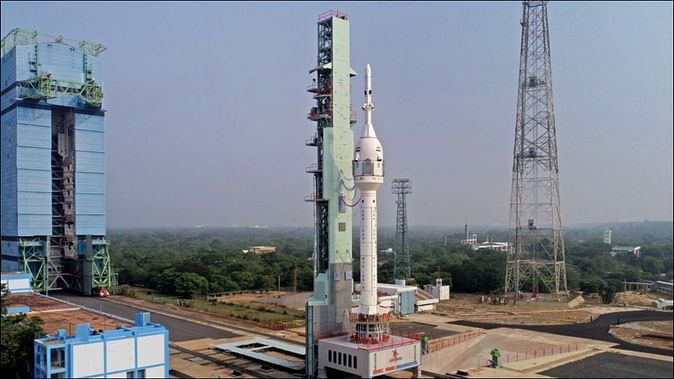
Image Source:
Introduction
The Indian Space Research Organisation (ISRO) achieved a significant milestone with the successful test flight of Gaganyaan, India's indigenous manned spacecraft. The test flight, which took place on [date], brings India one step closer to realizing its ambitious goal of launching human space flights. This article provides a detailed analysis of the Gaganyaan test flight from the UPSC perspective.
Understanding Gaganyaan
Gaganyaan is India's first manned space mission, aimed at carrying a crew of two to low Earth orbit and bringing them back safely. The spacecraft consists of a Crew Module (CM) that accommodates the astronauts and a Service Module (SM) that provides propulsion, life support systems, and other essential components.
From the UPSC perspective, Gaganyaan holds immense significance as it demonstrates India's growing capabilities in space technology and exploration. It opens up new avenues for scientific research, international collaborations, and economic possibilities.
Test Flight Overview
The test flight of Gaganyaan marked a crucial step towards achieving India's human spaceflight program. The unmanned mission aimed to validate the critical systems and performance of the spacecraft.
During the test flight, Gaganyaan was launched from the Satish Dhawan Space Centre in Sriharikota, Tamil Nadu. The spacecraft successfully reached the desired orbit and performed a series of maneuvers, simulating the experience of a manned mission.
Key Objectives and Achievements
The Gaganyaan test flight had several key objectives. Some of the notable achievements include:
- Successful launch and ascent to the desired orbit.
- Demonstration of various onboard systems, including life support, escape mechanisms, communications, thermal protection, and guidance.
- Testing the performance of the Crew Module and Service Module independently.
- Assessing the re-entry capabilities of the Crew Module.
- Validating the abort mission systems and emergency procedures.
Technological Advancements
The Gaganyaan test flight showcased several technological advancements made by ISRO to realize India's human spaceflight capabilities. Some of the notable advancements include:
- Development of a crew escape system allowing the safe return of astronauts in case of emergencies during launch or ascent.
- Integration of advanced thermal protection systems to withstand the extreme temperatures encountered during re-entry.
- Design and implementation of life support systems to provide a safe and habitable environment for the crew during the mission.
- Utilization of advanced propulsion systems for orbit insertion and maneuvers.
- Establishment of ground-based facilities for astronaut training, mission control, and recovery operations.
Implications for UPSC
The success of the Gaganyaan test flight has several implications for UPSC aspirants and those interested in India's space program. Some of the key points to note include:
- Increased relevance of space technology and exploration in the UPSC syllabus, particularly in the science and technology section.
- Opportunities for research and development in the space sector, leading to the growth of scientific institutions in India.
- Potential collaborations with international space agencies, fostering diplomatic relations and knowledge exchange.
- Economic benefits through commercialization of space technologies, satellite launches, and space tourism.
Conclusion
The successful test flight of Gaganyaan marks a significant achievement for India's space program and brings us one step closer to realizing our ambitions in manned space missions. The UPSC perspective on this milestone showcases the relevance of space technology and exploration in contemporary times. This achievement propels India into the league of nations engaged in human spaceflight endeavors and opens up new horizons for scientific, economic, and diplomatic possibilities.